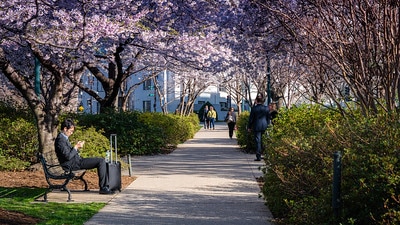Cities can enact laws and regulations, such as ordinances or codes, to enforce the broader vision or strategy behind urban-forest-related policies and plans.
Ordinances, by-laws, codes, and other regulations can regulate the activity of residents, government agencies, and private entities related to trees. They are typically enforced by city authorities, and may be associated with permits, fines, or incentives.

Even cities without comprehensive urban forest strategies often have tree ordinances developed by relevant city agencies, such as the department of parks and recreation, public works, or even transportation.
The table below presents some of the types of regulations that cities utilize to manage urban forests.
| Regulation | Enforcement |
|---|---|
| Tree preservation ordinance | Establishes protections of specific trees based on criteria such as species, size, or location (e.g. trees along riverbanks or steep slopes). Can also regulate maintenance, removal, and replacement of trees on public and private land. |
| Tree protection ordinance/ standard | Implements tree protection measures to be taken during and after construction to ensure tree roots, base, crown, and the surrounding soil structure are not disturbed. |
| Tree planting guidance | Defines approved species, sizes, and locations, as well as timing of planting and permitting process. |
| Zoning | Can place limits on the amount of impervious surface, establish open or green spaces, and utilization of green infrastructure for stormwater management in new developments. |
| Stormwater management ordinance | Can include trees and other green infrastructure as part of an integrated approach to stormwater management. |
| Landscaping ordinance | Defines tree and vegetation planting requirements such as spacing, species, variety, and placement (e.g. to screen, block noise from, and/or shade parking lots). |
| Public space design manual | Summary of regulations for designing public spaces. |
To be effective, regulations must be enforced. Thus, many cities also define enforcement authorities in their tree-related policies.